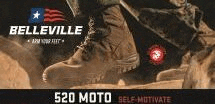VANCOUVER, BRITISH COLUMBIA, CANADA – JULY 28, 2020 – Mission Ready Solutions Inc. (“Mission Ready” or the “Company”) (TSXV: MRS) announces that, effective August 7, 2020, James A. Marks will assume the role of interim Chief Executive Officer (“CEO”) of the Company. To facilitate this change, Jeffery L. Schwartz has tendered his resignation as the Company’s President and CEO, effective August 7, 2020, but will remain a member of the Company’s board of directors (the “Board”).
Mr. Schwartz has served as the Company’s President and CEO since March 2017, during which time he has led the Company to new heights and presided over impressive revenue growth, with 2019 revenues reaching CAD $21.19 million, a 588% increase over the previous year.
“We are forever grateful for Jeff’s devoted and faithful service to the Company and we wish him all the best in his future endeavors,” states James Marks, a Director of Mission Ready. “It’s now time to transition to a new leader with deep leadership and organizational skills to continue to build and to stabilize the platform.”
Jeffery Schwartz, President and CEO of Mission Ready, states “Its has been a pleasure and truly an honor to help build Mission Ready to the point its at today. It is with mixed emotions that I step aside as President and CEO. I will certainly miss the great folks I’ve had the pleasure of working so closely with during the past 3 years but I am also very much looking forward to spending more time with my immediate and extended family. As for the Company’s future, I have full confidence in my fellow directors to identify an excellent candidate to lead the Company forward at this exciting and opportune time.”
Since joining the Company’s Board in June 2018, Major General (Retired) James A. Marks has contributed immeasurable value to Mission Ready, lending extraordinary insights and expertise gained throughout 30 years of service with the United States Army. General Marks served in the United States Army holding every command position from infantry platoon leader to commanding general and was the senior intelligence officer during the LA Riots, in the Balkans, Korea, Iraq. He is an Honor Graduate of the US Army’s Ranger School and a member of the Military Intelligence Hall of Fame. General Marks has a Bachelor of Science degree in Engineering from the United States Military Academy at West Point, NY and a Master of Arts degree in Foreign Affairs from the University of Virginia.
Additionally, the Company announces that it has granted incentive stock options (the “Options”), pursuant to its stock option plan (the “Plan”), for a total of 400,000 common shares of the Company, to a director and officer of the Company. The Options, subject to the terms of the Plan and the corresponding option agreement, are exercisable at a price of CAD $0.15 per share for a period of up to five years.


















































































































